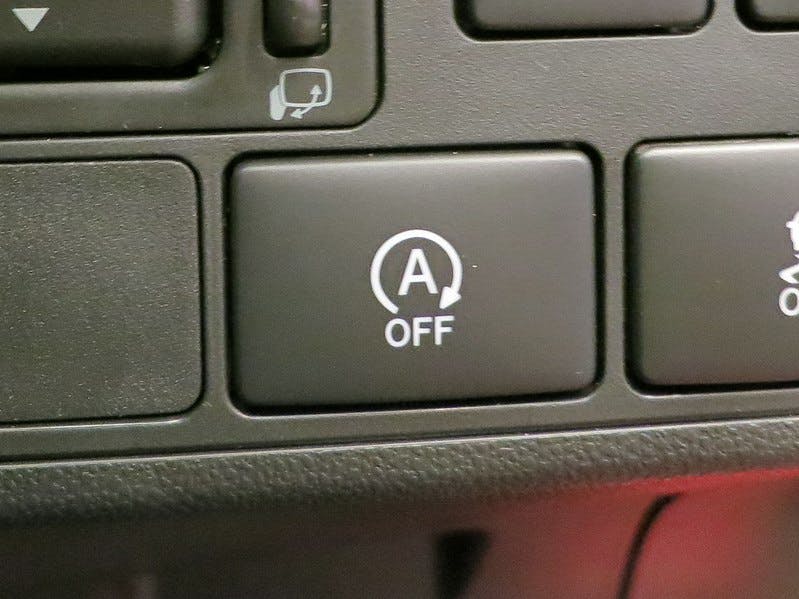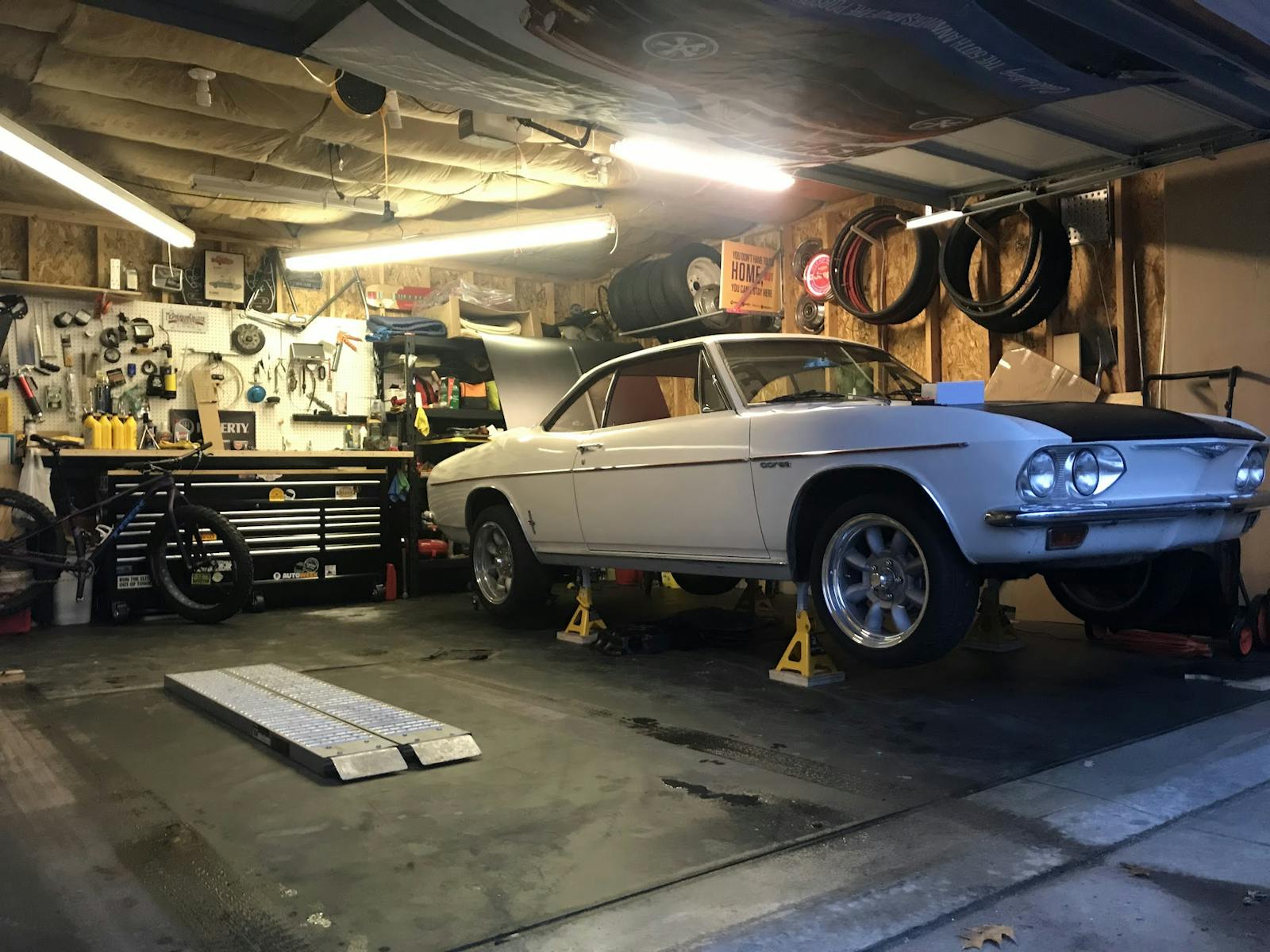Media | Articles
Piston Slap: Putting the Brakes on Auto Start/Stop? (PART II)
The feedback from last week’s Piston Slap was clear: Not only did I get it wrong, but many folks already knew the right answer. The solution for disabling a modern car’s auto stop/start is so commonplace from the correct Google search that the answer was right under my nose.
So yes, by all means, look for an “auto start/stop eliminator” designed to be plug-and-play with your vehicle. Just be mindful that installing one could void your warranty, and be aware that you are defeating an EPA-mandated device. (Apparently it is not mandated, but see the video above for other relevant pitfalls.)
Maybe you can get away with it, or maybe not: That answer is beyond the scope of our discussion. Instead, have a look at some comments that came my way after last week’s Piston Slap—you might learn just as much as I did!
Creep Up to the Line?

Geoffrey: One “hack” we found on our Escape (not sure on other models) is to not hold the brake, but instead inch forward a couple times. That should keep it disabled.
Marketplace
Buy and sell classics with confidence
Stay Cool

Richard: I have a 2023 Traverse High Country. I turn on the A/C set at any temperature. The car has never gone into Start/Stop mode.
Regarding Dealership Conversations …

Brian: I heard you mention calling up the representatives at Ford, Chevy, or Chrysler, and asking them to be able to disable this feature? I mean, as a mechanic for the past 20 years it sounds like a great idea, but has anybody ever actually been able to do that?
Me: I should have been clearer when making that suggestion. I’ve received straight-up good information from car dealerships about questionable mods like auto start/stop elimination. Yes, but there’s always a trick to it.
Your average service advisor (the first person you often meet) isn’t likely to help. But if you ask nicely for the Service Director (or Fixed Ops Director) you can sometimes get valid recommendations outside of what their corporate overlords recommend. These people have seen it all, and sometimes they are willing to help. Their advice becomes much more affordable when they know the vehicle in question is outside of the warranty period. (And sometimes they go out of their way for a nice person who just bought their brand of vehicle as a used car, too.)
I have been this lucky in a general sense, and that’s because they will include CYA statements to ensure such recommendations don’t come back to haunt them. It is worth a shot, even if it is one helluva long shot. But not in this case, because everyone knows to look for eliminator kits, except for yours truly.
A Problem in the Big Picture?

Dean: I have a follow-up question for you. If you use the auto-stop feature on your car, and your car auto stops and starts several times while you are running a few shopping errands (say maybe 12 times in one trip) as opposed to only two times w/o the feature, what effect does this effort have on the life of your vehicle’s starter?
Me: The effect of multiple stop-starts is supposed to be negligible, considering the quality of modern engine oils and the latest starter designs. But the odds of them being perfectly reliable after 10+ years of service have yet to be determined. (And it probably never will be analyzed, to be honest.)
There are plenty of stories on the internet about out-of-warranty vehicles needing expensive repairs when auto stop-start fails. So disabling it with a quality defeat device could be a good idea after the warranty expires.
Escaping Engine Damage?

Jason: I have a ‘17 Escape with the 1.5-liter EcoBoost engine that has start/stop which can be turned off. Most times (if not all the time) I leave my system off. The reason for that is that I have always heard that most engine wear (of a properly maintained engine) occurs on startup.
If this is true, how does start/stop not kill your engine with increased wear? Does the oil pump continue to run despite the engine being off? I assume something has to happen to at least, protect the turbo bearings. I appreciate your time!
Me: Much like my previous statement, engine wear should be negligible for at least three reasons:
- Auto stop/start is usually (only?) activated when the engine is at operating temperature, and there is generally very little wear outside of cold starting.
- Modern GF-6A oils are light years ahead of stuff we used just a few years ago.
- Even engine bearings have evolved to work with auto stop/start.
As always, your mileage may vary. Especially if you have a pre-owned vehicle with zero service history.
About Hood Latches

Don: I have disabled the start/stop feature on my 2018 Jeep Cherokee Latitude by removing the wire harness connector to the hood latch assembly. This will bring up a service message on the instrument display every time you start the vehicle but at least it disables the function.
Brendon: I have a 2018 Chevy Traverse. When I first got it there was nothing available to disable it. The Traverse doesn’t even have a button to turn it off. Recently I found a plug-in harness on Amazon. I believe it tells the computer the hood is open because it plugs into the hood latch sensor. No more start stop, no check engine lights or anything, and it was only $15.
Low Voltage Detection?

Philip: In my experience with a 2016 Cherokee, they have a module on the negative battery lead to detect low voltage and disable stop/start. If you disconnect this, the function is disabled. You do get a very small warning light on the dash, but no more stopping.
I have used this for three years now without a problem. Living in a warm tropical environment I don’t like the loss of my a/c whilst stopped. I hope this information helps, not sure what other models have the same system.
Too Bad It Won’t Default to “Off”

Mark: I know many complain about the auto-stop features, and I am glad you can at least turn it off. I wish the automakers wired it so it would be off all the time, enabling it at your own will with the push of a button.











The stop-start function is NOT mandated by the EPA. It is offered to manufacturers as an incentive. If they add the feature, they get an extra credit towards their CAFE.
As an incentive, it has to be functional when the car is delivered to the dealer. After that, all bets are off. That’s why most cars have a button, on the dash or touch screen, that turns the feature off.
On some cars I have driven, BMW and Bentley, turning the stop-start off makes it stay off until turned on again. On most cars, the stop-start has to be turned off every time you start the car.
If it was against the law to turn off the stop-start, car makers wouldn’t put a button on the dash just to defeat the feature.
We have a winnah – give this man a kewpie-doll! I love bob elton’s logical response!
I’m pretty sure that every car automatically activates stop/start with every key cycle. If it isn’t on by default they can’t use it in emissions testing and doesn’t qualify for the credit either.
Thank you for the reality check, Bob. Your understanding of the industry and common sense shine through once again!
This issues is being made into a bigger issue than it really is. The web and web stories all talk about it but provide few facts.
As Bob stated above it is not mandated by the EPA. This is what the EPA calls an off cycle credit. This means there is no real way to measure consistently what fuel and emissions are being saved as it varies depending how you drive.
The EPA is not going to bust you if you disable it but a CARB state will or any state emissions testing.
The starters are much better today than they ever were. These systems seldom fail. Yes a small number will speak out on the web but there are no wide spread failures and there are few if any confirmed engine damage.
There are more Toyota, Lexus and Hyundai engine failures than problems with this.
If you don’t want it buy a smaller car that may not have it or has a disable button. The system is bigger than us so unless we vote for folks willing to remove the activist st the EPA you are going to get more of this.
At first I shut it off but since I just drive the thing.
Full heat or ac keeps it on. If you are easy on the brake pedal it will not set.
I don’t like it but I am not afraid of it.
If you own a German car with over 100k miles there will be many more things costing tons of money to fix. The thermostat on an Audi A6 is a major job alone.
It has nothing to do with consistency. The credits are given for things that automakers might not want to do because the impact on the CAFE and Monroney label isn’t worth it to them. But the credits are set up so they do make a big enough impact that it becomes worthwhile in more cases.
Thanks for posting the update, accepting your mistakes and admitting them are one of the reasons I always read your articles.
As to the durability issue, yes it will wear the starter more than w/o stop/start. Of course the mfgs do claim that they use a “heavy duty” starter but there is a practical limit on the length of the brushes, the main wear component of a starter. However doing a warm restart requires fewer revolutions than a cold start. If the key is shut off it may take 2 or more engine revolutions, to acquire the cam position signal and start injecting fuel and making sparks. Not shutting down the computer means that the computer still knows exactly where the engine is and will start squirting fuel and making fire that much sooner. Because it is warm it also means they don’t have to worry about vaporization.
It will be warm too, since they won’t allow the first shut down until the engine reaches a min operating temp and the catalyst has had time to get up to temp. That way when it goes to restart it won’t be at a temp where warm up enrichment is indicated and the catalyst will light off immediately. Otherwise it could have a net negative impact on emissions.
Yes it can have some impact on battery life. Again the mfgs often use a battery with a higher reserve capacity, but it high use of accessories and extensive city driving can leave the battery in a perpetually partially discharged state. Some MFGs, I’m looking at you Chrysler, FCA, Stellantis or what every they are going by this week, actually have a second battery to run accessories while the engine is off to prevent drain of the starter battery. So yeah now you have to replace two batteries and they often hide that auxiliary battery.
Regarding engine wear that has been proven long ago to be a non-issue. Hybrid vehicles have been shutting down the engine since the first Prius and Insight. Because most can shut down with the vehicle in motion, the number of off-on cycles far exceeds what occurs with the typical ICE start/stop. Not uncommon for the early Prius to peg the ODO at its limit of 299,999.9 mi with its original engine and the early Escapes frequently lasted 300k or more in NYC Taxi use again with the original engine.
I have made plenty of mistakes in my life, I am just glad that I learn from them. (Well, usually.)
The engine wear/hybrid issue is a good one. Whatever extra wear start/stop might induce is gonna be wholly negligible.
Cue Ol’ Blue Eyes:
“Regrets, I’ve had a few
But then again, too few to mention
I did what I had to do
And saw it through without exemption
…
Yes, there were times, I’m sure you knew
When I bit off more than I could chew
But through it all, when there was doubt
I ate it up and spit it out”
Considering this and the other two columns I created, maybe I did indeed do it my way. (Except in the present tense!)
Ain’t nothin’ wrong with your way, sir! 👍
I have a 2017 Chev Cruze. To defeat start-stop I keep shift in LO and click up to 6 before I
drive off. Automatic shifting proceeds as if it were in D. Problem solved.
One piece of i formation that seems to be missing in most of these auto stop/start articles is that many vehicles don’t use the starter for this function. What happens is the computer keeps track of the engine position when it stops and fires the next spark plug to restart the engine. There is no need for a modern engine to use the starter. We have a 2019 Golf that does exactly this.
As for you A/C people, the air stays cool for up to a minute while stopped. If we need the car to restart, we just turn the steering wheel a little.
I’m no fan of the feature, but if this is the way it’s accomplished, I’ve gotta appreciate the ingenuity.
I doubt if most cars use this alternative method to start; I very often hear starter motors turning when the light turns green. Perhaps some European makes (besides VW) use it?
Of course, hybrids can usually just use the electric drive/regen motor to start the engine.
A note regarding potentially “voiding your warranty”. The module does not disable the auto stop “feature”. It only saves your previous setting when you powered down the automobile. You can leave the auto stop turned on like the default if you want. It just allows you to start the car with the last position in place upon starting up.
That all depends on the solution to the problem, some of them do reprogram the PCM, which could void your warranty. others just “push” the button for you while others fool the car into thinking the hood is open and I’m sure there are other strategies for other vehicles.
2020 Chevy Equinox put shifter in manual and upshift to 9 and it turns off auto start stop.
My last four BMWs have had Auto Stop/Start. Before that, I had an M3 with the 4.0l V8. At a traffic light, I could just feel the money draining from my wallet. The next car had Auto Start/Stop and it worked brilliantly. It was pretty much imperceptible when stopping or starting.
I began to read stories in the automotive press about people despising the feature and really couldn’t understand why as it works so brilliantly on my car.
However, I had an American rental car a few years ago that also had the “feature”. When the car restarted, I thought it was going to rip the car apart. That’s when I realised that it wasn’t a problem with Auto Stop/Start per se, but rather the implantation of it.
The solution: Buy a better car! 😂
As someone who works in the automotive lubrication industry I can say that the bad stuff you hear about auto start stop is true. It is incentivized to be added to vehicles because it “faves wasted fuel” which is an absolute joke with how minimal it is. As many commenters said the most wear on an engine occurs at startup, that is a fact. Its also true that a full cold start is the worst. After only being off for say 20 seconds there is remaining lubrication throughout the engine to reduce friction. But in the case of bearings friction isnt exactly the issue. While running those bearing maintain a layer of oil that acts like a cushion. The oil actually supports the rod or crank somit doesnt actually touch the bearing. Every time the engine has to start it takes a moment to build up enough oil pressure for that fluid cushion to form. That does cause bearing wear. So having that happen 20x per day instead of 2 will cause those bearings to wear much faster. Technology has come a long way and there are special materials used in these bearings along with other processes like surface coatings. No matter what start\stop is more wear. I disable it on all vehicles. I would rather pay the extra 25 cents per month in fuel cost than have an engine that starts burning oil or throws a rod.
As I stated above hybrid vehicles have been shutting down the engine way, way, more frequently than stop/start equipped ICE vehicles for over 25 years and it simply isn’t an issue.
So glad I don’t have this silly system on any of my cars.
So am I. But I guess I’m glad that SOME people have it, otherwise there wouldn’t be so many interesting articles and comments about it to read!
Start-Stop is irritating but nothing compared to the other nanny/nagger features that came on my 2034 Enclave. Some can be turned off, some can’t. They distract the driver and can be dangerous in some situations, speaking from experience! We have the government mandating crap, we don’t need the auto companies piling on with
more crap! ALL of these features should be able to turned off. I don’t want to pay for this stuff to start with.
How did you get a 2034 Enclave that won’t be produced for another ten years?
On some cars, these systems can be bypassed quite inexpensively. Either bygrounding a pin on the button, or using a resistor or diode between 2 of the pins on its wiring harness.
You can order it if you have a friend at the factory.
His other car is a DeLorean modified by Doc Brown.
2023 Enclave. Sorry, fat fingers.
LOL. No worries
I used to own an ‘05 Pontiac GTO with a 400 hp 6.0 v8. It had a display that showed ‘instant mpg’ when moving. One day, while idling in a parking lot, I noticed that at 0 mph, the display switched to gallons per hour. This engine, at idle, was using 1.0 gph. If this is/was correct, I’m not willing to suffer the wear and tear nor the shudder and stumble (or even the oddness) of Stop/Start to save at best a quart a day. (I also was once a poor, young enthusiast who suffered with beaters that would stall at lights snd I’ve worked very hard to have the knowledge and funds to not have that problem. I don’t want it built in.)
I feel like the mileage calculators on the car exaggerate this. Remote starting and idling the car for about 1 hour a week and my v6 engine car will report 5 less mpg. I find it hard to believe that an hr of idling takes away 2-3 gallons of gas (which would be more than 1 hr of city driving)
On a 2019 Ford 150 if you put test plug in trailer connector off-on disappears. Our 2023 150 was ordered without that stop start for the sum of about $50. dealer said it was a very popular delete, But then we live out in the sticks where cows outnumber people 10 to 1
Jarring auto-start/stop systems won’t be with us much longer. As more cars switch to 48V electrical architectures, the jolting start/stop feel is eliminated. Every ICE car will have auto-start/stop, and it will be imperceptible. These electrical systems can keep the HVAC going at a stop, smoothly propel the car off the line as the ICE motor is still starting up, and allow for a fluid transition between electric and ICE propulsion.
Keith E ( and others) – as you clearly know more about these systems, I have two questions. 1 ) One being that while the current “hot rod ‘ starters are more efficient is there a future in brushless auto/starter motors even with their higher cost. 2) Would it not make sense to have an auto shutoff on ICE vehicles after some period of time? After ‘X’ minutes. The remote start feature on most vehicles will shut themselves off after roughly 10-15 minutes so it hardly seems like pie in the sky tech. I don’t know how many times I’ve been stuck in a ” something really bad must have happened ” jam and shut the car off while everyone else has still got their foot planted on the brake light as though we’re going somewhere soon. So a kind of auto ‘stop wasting gas you’re going to be stuck here for awhile’ idiot light… for idiots.
Well technically many hybrids use a brushless motor for starting the engine among other things. Many cars do have an auto shut off though on the ones I have it takes 30 min for that to happen.
My 2021 Outback has the override, but you have to override again with each restart